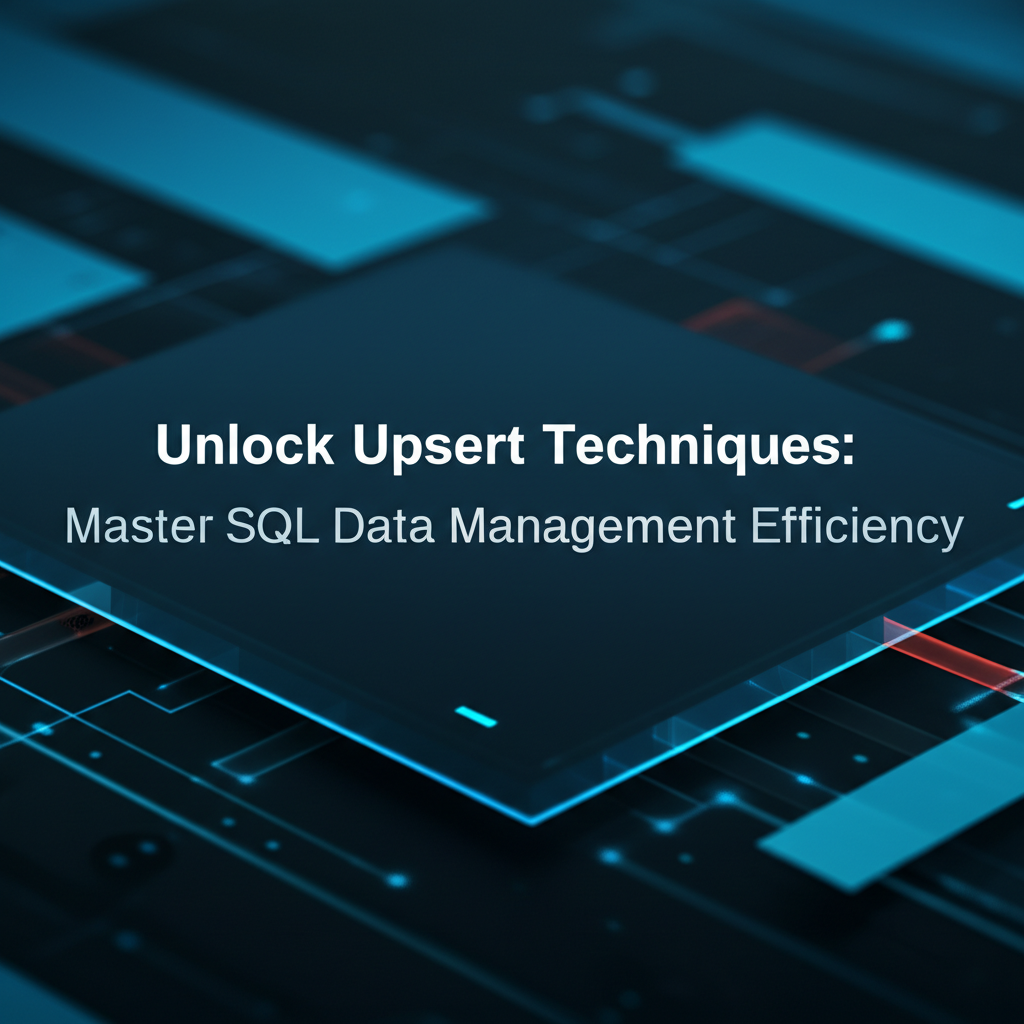Unlock Upsert Techniques: Master SQL Data Management Efficiency

Introduction
In the world of SQL data management, the upsert operation is a cornerstone technique that allows database administrators and developers to efficiently manage data. An upsert operation combines the insert and update functionality into a single operation, reducing the complexity and improving the performance of data management tasks. This article delves into the intricacies of upsert techniques in SQL, exploring their benefits, and showcasing how they can be leveraged to enhance data management efficiency. We will also touch upon the role of APIPark in simplifying these processes.
Understanding Upsert Techniques
What is an Upsert?
An upsert is a database operation that inserts a new record if it does not exist, or updates the existing record if it does. This is particularly useful in scenarios where data needs to be synchronized between different systems or when dealing with data that is subject to frequent changes.
Types of Upsert Operations
- INSERT ON DUPLICATE KEY UPDATE: This is a common upsert operation in MySQL. If a record with the same primary key already exists, it updates the record with the new values.
- MERGE: Available in SQL Server and PostgreSQL, the MERGE statement combines the functionality of INSERT, UPDATE, and DELETE. It performs an update if the target record exists, or an insert if it does not.
- UPSERT: This is a generic term used to describe any upsert operation, and it is supported by various databases, including Oracle, MongoDB, and SQLite.
Benefits of Upsert Techniques
- Efficiency: Upsert operations reduce the number of SQL statements required to manage data, thereby improving efficiency.
- Consistency: They ensure that the data remains consistent across different systems.
- Simplicity: They simplify complex data management tasks by combining multiple operations into one.
APIPark is a high-performance AI gateway that allows you to securely access the most comprehensive LLM APIs globally on the APIPark platform, including OpenAI, Anthropic, Mistral, Llama2, Google Gemini, and more.Try APIPark now! 👇👇👇
Implementing Upsert Techniques in SQL
Example: Using INSERT ON DUPLICATE KEY UPDATE
INSERT INTO users (id, name, email) VALUES (1, 'John Doe', 'john@example.com')
ON DUPLICATE KEY UPDATE name = VALUES(name), email = VALUES(email);
This SQL statement inserts a new record if the id does not exist. If a record with the same id already exists, it updates the name and email fields with the new values.
Example: Using MERGE
MERGE INTO users AS target
USING (VALUES (1, 'John Doe', 'john@example.com')) AS source (id, name, email)
ON target.id = source.id
WHEN MATCHED THEN
UPDATE SET name = source.name, email = source.email
WHEN NOT MATCHED THEN
INSERT (id, name, email) VALUES (source.id, source.name, source.email);
This SQL statement performs an update if the id exists, or an insert if it does not.
Leveraging APIPark for SQL Data Management
APIPark is an open-source AI gateway and API management platform that can significantly simplify the process of managing SQL data. With its robust features, APIPark can help streamline upsert operations and enhance overall data management efficiency.
Key Features of APIPark
- Quick Integration of 100+ AI Models: APIPark allows for the integration of various AI models, which can be used to preprocess or post-process data during upsert operations.
- Unified API Format for AI Invocation: APIPark standardizes the request data format across all AI models, ensuring that changes in AI models or prompts do not affect the application or microservices.
- Prompt Encapsulation into REST API: Users can quickly combine AI models with custom prompts to create new APIs, such as sentiment analysis, translation, or data analysis APIs, which can be used in upsert operations.
- End-to-End API Lifecycle Management: APIPark assists with managing the entire lifecycle of APIs, including design, publication, invocation, and decommission. This ensures that upsert operations are performed in a controlled and consistent manner.
- API Service Sharing within Teams: The platform allows for the centralized display of all API services, making it easy for different departments and teams to find and use the required API services.
Conclusion
Upsert techniques are a powerful tool for SQL data management, offering efficiency and consistency. By leveraging tools like APIPark, developers and database administrators can further streamline these operations, ensuring that data management remains a smooth and effective process.
FAQs
Q1: What is the difference between an insert and an upsert operation? An insert operation adds a new record to the database, while an upsert operation adds a new record if it does not exist or updates an existing record if it does.
Q2: Can upsert operations be used in all SQL databases? While many SQL databases support upsert operations, not all do. It's important to check the capabilities of the specific database you are using.
Q3: How can APIPark help with upsert operations? APIPark can simplify the process of managing upsert operations by providing tools for integrating AI models, standardizing data formats, and managing the entire API lifecycle.
Q4: Are upsert operations always more efficient than separate insert and update operations? Not necessarily. The efficiency of upsert operations depends on the specific use case and the capabilities of the database being used.
Q5: Can upsert operations be used with complex data relationships? Yes, upsert operations can be used with complex data relationships, but it may require more complex SQL queries and careful planning to ensure data integrity.
🚀You can securely and efficiently call the OpenAI API on APIPark in just two steps:
Step 1: Deploy the APIPark AI gateway in 5 minutes.
APIPark is developed based on Golang, offering strong product performance and low development and maintenance costs. You can deploy APIPark with a single command line.
curl -sSO https://download.apipark.com/install/quick-start.sh; bash quick-start.sh

In my experience, you can see the successful deployment interface within 5 to 10 minutes. Then, you can log in to APIPark using your account.

Step 2: Call the OpenAI API.



